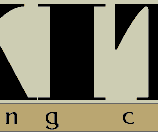 |
 |
 |
 |
|
|||||||
 |
|
|
|||||||||
BRIEF HISTORICAL SUMMARY:
Originally Japanese dogs were small to medium in size and no large breeds existed. Since 1603 in the Akita region, Akita Matagis (medium-sized bear-hunting dogs) were used as fighting dogs. From 1868 Akita Matagis were crossed with Tosas and Mastiffs. Consequently, the size of this breed increased, but characteristics associated with Spitz Type were lost. In 1908 dog fighting was prohibited, but this breed was nevertheless preserved and improved as a large Japanese breed. As a result, nine superior examples of this breed were designated as Natural Monuments in 1931. During World War II (1939-1945), it was common to use dogs as a source of fur for military garments. The police ordered the capture and confiscation of all dogs other than German Shepherd Dogs used for military purposes. Some fanciers tried to circumvent the order by crossbreeding their dogs with German Shepherd Dogs. When World War II ended, Akitas had been drastically reduced in number and existed as three distinct types: 1) Matagi Akitas 2) Fighting Akitas and 3) Shepherd Akitas. This created a very confusing situation in the breed. During the restoration process of the pure breed after the war, Kongo-go of the Dewa line, which exhibited characteristics of the Mastiff and German Shepherd Dog influence, enjoyed a temporary but tremendous popularity. The Akitas developed with increasing number of breeders and a great rise in popularity. However, sensible learned fanciers did not approve of this type as a proper Japanese breed, so they made efforts to eliminate the strain of foreign breeds by crossbreeding with the Matagi Akitas for the purpose of restoring the original pure breed and succeeded in stabilizing the pure strain of large sized breed as known today.
|
|||||||||||
Home | Our Dogs | Photo Gallery | Special Wins | Memory Lane | Mr. Hirose´s visit | AW Interview | Contact | Guestbook |
|||||||||||
|
|
|||||||||||